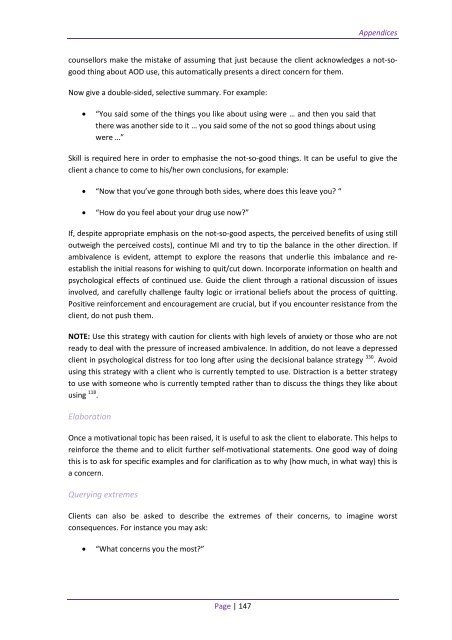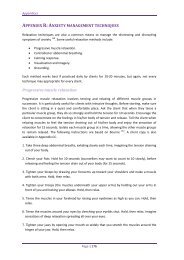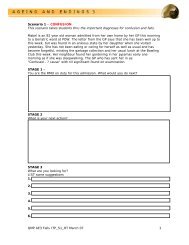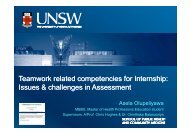appendix d: motivational interviewing - National Drug and Alcohol ...
appendix d: motivational interviewing - National Drug and Alcohol ...
appendix d: motivational interviewing - National Drug and Alcohol ...
Create successful ePaper yourself
Turn your PDF publications into a flip-book with our unique Google optimized e-Paper software.
Appendices<br />
counsellors make the mistake of assuming that just because the client acknowledges a not-sogood<br />
thing about AOD use, this automatically presents a direct concern for them.<br />
Now give a double-sided, selective summary. For example:<br />
• “You said some of the things you like about using were … <strong>and</strong> then you said that<br />
there was another side to it … you said some of the not so good things about using<br />
were …”<br />
Skill is required here in order to emphasise the not-so-good things. It can be useful to give the<br />
client a chance to come to his/her own conclusions, for example:<br />
• “Now that you’ve gone through both sides, where does this leave you? “<br />
• “How do you feel about your drug use now?”<br />
If, despite appropriate emphasis on the not-so-good aspects, the perceived benefits of using still<br />
outweigh the perceived costs), continue MI <strong>and</strong> try to tip the balance in the other direction. If<br />
ambivalence is evident, attempt to explore the reasons that underlie this imbalance <strong>and</strong> reestablish<br />
the initial reasons for wishing to quit/cut down. Incorporate information on health <strong>and</strong><br />
psychological effects of continued use. Guide the client through a rational discussion of issues<br />
involved, <strong>and</strong> carefully challenge faulty logic or irrational beliefs about the process of quitting.<br />
Positive reinforcement <strong>and</strong> encouragement are crucial, but if you encounter resistance from the<br />
client, do not push them.<br />
NOTE: Use this strategy with caution for clients with high levels of anxiety or those who are not<br />
ready to deal with the pressure of increased ambivalence. In addition, do not leave a depressed<br />
client in psychological distress for too long after using the decisional balance strategy 330 . Avoid<br />
using this strategy with a client who is currently tempted to use. Distraction is a better strategy<br />
to use with someone who is currently tempted rather than to discuss the things they like about<br />
using 118 .<br />
Elaboration<br />
Once a <strong>motivational</strong> topic has been raised, it is useful to ask the client to elaborate. This helps to<br />
reinforce the theme <strong>and</strong> to elicit further self-<strong>motivational</strong> statements. One good way of doing<br />
this is to ask for specific examples <strong>and</strong> for clarification as to why (how much, in what way) this is<br />
a concern.<br />
Querying extremes<br />
Clients can also be asked to describe the extremes of their concerns, to imagine worst<br />
consequences. For instance you may ask:<br />
• “What concerns you the most?”<br />
Page | 147

















